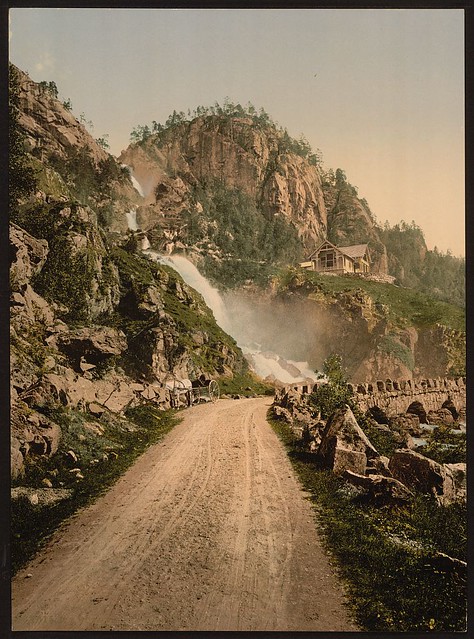 |
| Mikal Nilsen |
The Nielsens & Olsons
By Contributor Winnie Nielsen
My husbands' Norwegian family story begins in Sandar Sondefjoprd, Norway with the marriage of Nils Andreasen and Maren Pedersdotter in 1852. They were a farming family and the 1875 record showed that the year produced 1/4 ton barley, 1 1/2 ton oats, and 3 tons of potatoes. They had 6 children and their fifth son, Mikal Nilsen, was born in 1864.
 |
| Amunda Nilson |
Mikal Nilsen immigrated as a young man to American in March 1887 on the vessal named Thingvalla. His passenger ticket was number 355 and they landed in April in New York City. He worked as a laborer and went back in in 1894 and married Amunda Anderson( born in Tonsberg, Norway in 1866). He returned to American and she joined him one year later. During the US census of 1910, both Mikal and Amunda were US citizens living in Brooklyn N.Y. Mikal was employed in an asbestos plant and they both could read, speak and write English.
 |
| Mikal and Amunda Nilsen and child |
Mikal and Amunda's seventh son was Arthur Nielsen. Nilsen was changed to Nielsen when Mikal immigrated. Arthur met and married Kathleen Olson in Brooklyn N.Y. in 1942 during World War II.
 |
| Marthilde Olson |
 |
| Charles Olson |
 |
| Charles and Marthilde |
Like many Norwegian immigrant families, the Nilsens and the Olsons, came here to seek a better life with the many work and life opportunities that were not available to them in Norway. They were regarded in the US as hard working and highly skilled. They banded together in the Brooklyn ,N.Y, Norwegian community supporting one another and helping new family members come and get established. They worked hard to learn the language and American way of life.
By the time Kathleen and Arthur grew up, they did not speak Norwegian and were fully westernized with friends and life in American public schools. They saw themselves as Americans first and Norwegian second. Warren's family grew up on the naval base in Virginia and the traditions of the Old Country became more faint as the years passed. But true to many second and third generation Norwegians, what did survive were favorite recipes. Marthilda was known for her delicious waffles, which were made with lots of eggs and fresh ground cardamon. Kathleen carried on that tradition with her grandchildren and whenever she visited, she made Nana Olson's waffles. My children loved them as well as their cousins.
 |
| Kathleen and Arthur with their children |
Nana Olson's Waffle recipe here:
2 C regular flour
1/4 cup sugar
1/2 tsp salt
1 1/2 tsp baking powder
3/4 tsp ground cardamon
1/4 C melted butter
3 eggs
1 tsp vanilla extract
1/2 - 3/4 cup milk or enough for a thick batter depending on the size of your eggs.
Mix all ingredients together and cook in a waffle maker till golden brown. Serve immediately with butter and warm syrup. Delicious!!
America was the melting pot for so many countries. Scandinavian immigrants took many pathways to a new life here. Some went west to homestead on the prairie while others congregated in cities and applied their skills to the labor force. Today, they look back with pride at what their great grandfathers and grandmothers did to make life better for themselves and their children. The joined the many other immigrants who helped build this nation and shared their love of their homeland with neighbors and friends. For the third generation family of these Norwegian immigrants, I would say they sweetened the effort one delicious waffle at a time!














